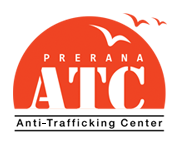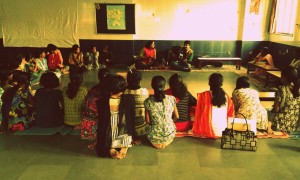
To be or not to be? Questions on motherhood searching answers
Ria Singh
Project Coordinator
Among the various challenges that confront a social worker in the field, balancing empathy and objectivity is perhaps the most daunting. Every day brings in cases, experiences and perspectives that serve as a reminder of an adage “Life is but shades of grey”. Everything, no matter what, must be evaluated in the context that it is built in and not in isolation; one often goes back to the oft-quoted academic question – “Is objectivity a myth?”
The case presented here highlights one such experience. It is also an attempt to find answers to the different questions that were raised during the course of interventions in the case.
In March of 2022, the Child Welfare Committee (CWC) referred a case of a 17-year-old girl, Shreya who had been allegedly repeatedly sexually exploited by her neighbours. Her case was assigned to me by my organization. At the time of referral Shreya was 7 months pregnant. With such referrals, it is crucial to understand the child’s situation – their feelings, their expressions, and their perception of what is in fact happening. When I first met Shreya, I wanted to understand what she was going through and how she was adapting to her situation.
During my interaction with both, Shreya, and her family, they all expressed that while they would continue with the pregnancy full term, they had no intentions of keeping the infant. Both Shreya and her parents maintained that the presence of the infant would not only hinder the prospects of Shreya but would also cause disturbances in the future of her siblings. I also noticed that the family was concerned about the stigma a child born out of wedlock could bring to the family and to Shreya.
I could not help but reflect on whether Shreya’s views were absolutely her own or were they influenced by her family. To what extent should I, as her social case worker, make efforts to ensure that the views of the family, a source of constant companion and influence on Shreya, do not hamper her independent thought process? After all, as her social case worker it was my responsibility to uphold her right of self-determination and encourage her to make an informed decision.
It also got me thinking on the propriety and weightage to be given to the societal norms and notions of ‘honor’ when the future course of action for the victims of sexual offence must be determined. Was it ‘just’ to consider such societal expectations? Should these even be the factors to be considered? And more importantly, should a 17-year-old be in a situation where she has to consider all of this while thinking about her future? However, as a social worker, I had to push all these thoughts in the background and be sensitive to the situation of my client, without being overtly consumed by it. In social case work we are trained to follow the principle of Controlled Emotional Involvement – which, in this instance, I found difficult to practise.
After much deliberation with Shreya and her family, I communicated the wishes of Shreya to the CWC who further directed me to coordinate with a Specialised Adoption Agency (SAA)[1]. Post the authorization by the CWC, I arranged a meeting between Shreya (and her family) and a SAA. The intention of the meeting was to orient Shreya & her family on the process of safe surrender and that the child may go in for adoption. It was also to ensure that all doubts, clarifications, questions that they had are addressed. This orientation was also arranged to make the child and her family aware of their rights to reclaim the child, if they wish to change their mind (within a stipulated period of sixty days as allowed by the law after signing the ‘Deed of Surrender’).
During the meeting, the overall process of safe surrender was explained, and the questions raised by Shreya and her family were also addressed. They were specifically made to understand that they can only take this decision when the child is born and once they surrender they will have 60 days to reclaim the child. The entire process would be done under supervision of the CWC and that their information would be kept confidential. The SAA also shared that the child would go in for legal Adoption to a safe family once the reconsideration period of 60 days is over and the child is declared free for Adoption. Post the meeting, through in-person visits, I ensured that all follow up concerns of Shreya, and her family were also adequately addressed.
Throughout this entire process I couldn’t help but think about what would be going through the developing mind of a 17-year-old victim of sexual offence when the process of surrendering and subsequent adoption of her own child was being explained to her? Was she even in the frame of mind to make this decision? What can one do to ensure that the decision being made is the right decision? In fact, is there such a thing as ‘the right’ decision in such cases?
In May 2022, Shreya delivered a baby. Soon after the delivery, Shreya did not feel like parting with the new-born. Thus, in consultation with her family, it was decided that the discussion on surrendering the child would be resumed in a few days’ time. Shreya thus spent 3 to 4 days with her new-born.
During this time, Shreya’s family was approached by another family who offered to take the child in exchange for some money. Innocently Shreya’s family even asked the SAA whether they would be getting anything once they surrender the child. The SAA informed them that they should not give the child to anyone in exchange of money as its unlawful. They were counselled again that the surrender is a legal process which protects them and their child’s rights. The SAA promptly informed me about this development. I spoke again to Shreya’s family and all aspects of the surrender process were again explained to the family and efforts were made to address all their doubts.
Having worked with Shreya and her family for a few months now, I thought, what pushed the birth mother/parent to consider refusing to part with her baby even after she seemed entirely convinced that she would not keep the child post the delivery? What was going through the minds of those family members who offered to take the baby in exchange for money? What drove Shreya’s family to ask the adoption centre what they will get in return for giving up the baby? However, I pushed all these questions behind and focused on resolving the matter at hand.
After many deliberations with her family, Shreya as well as her family decided to surrender the new-born. I was actively involved throughout the course of the decision to ensure that the interests of Shreya as well as the new-born child were always safeguarded and that she was constantly aware of all her rights. This included the fact that she had 60 days after surrendering the child for Adoption to reconsider her decision.
When the adoption centre staff asked Shreya’s mother for the name of the infant, she was startled. She then said that she had not thought of a name for the infant. It was only after a few minutes when I asked Shreya about this, she expressed that she had in fact thought of a name. She just didn’t convey it because no one ever asked her. She ended up giving a name to the infant – her version of a parting gift to her infant.
The infant was surrendered by Shreya and her family before the Child Welfare Committee with support from the SAA. The SAA reiterated that she had 60 days to reconsider her decision and reclaim the child. Shreya did not reclaim the child within the 60 days. The child was then declared free for adoption by the Child Welfare Committee and was then placed in legal adoption through the CARA system by the SAA.
During my case intervention, I observed that Shreya felt that she couldn’t keep her child with herself primarily because of the societal pressure of acceptance which her child and she would have to face in the future. The entire process of surrendering the new-born was overwhelming for her. She was overwhelmed with emotions when the process of surrendering took place.
Honestly, while I handled this case I thought – this case brings up more questions than it answers. Will any form of judicial punishment to the perpetrators of abuse ever be sufficient to make up for the injustice done to this young 17-year-old? When the newspapers and electronic media reports numbers and statistics on sexual offences, are they able to adequately capture the impact that it has on the lives of the victims?
It pushed me to think about what we could do, as an individual and as a society, to ensure better rehabilitation options for victims of sexual violence? During her pregnancy, I had deliberated options with Shreya about the government / private residential facilities where she and her baby could reside temporarily until she could upskill herself to look after herself and her baby. However, Shreya had shared that she could not leave her family and her siblings as that would have an impact on the prospects of her siblings.
Becoming a mother is perceived through varied lenses across our society. Most often than not, a woman who has a child out of wedlock, or adopts one, or decides not to become a mother, are all stigmatized. The perception that only a married woman who gives birth to a new-born can be considered a mother is both flawed and discriminatory. It’s hard not to wonder, why does the society look at these women differently?
It’s been close to a year now that I have been working with child victims of sexual violence. I hope I find some answers to the innumerable questions raised above through our social case work interventions sooner than later.
[1] SAA means an institution established by the State Government or by a voluntary or non-governmental organisation and recognised under Section 65, for housing orphans, abandoned and surrendered children, placed there by the order of the Committee, for the purpose of adoption;
External Review: Mr. Sunil Arora (Executive Director, Bal Asha Trust)
To be or not to be? Questions on motherhood searching answers
The blog post was first published on Dr. Pravin Patkar's Blog 'Expressions'. The post sheds light on the impact and Read more
Trauma cannot be addressed as a standalone problem. It needs to be addressed holistically, keeping in mind various experiences and Read more



